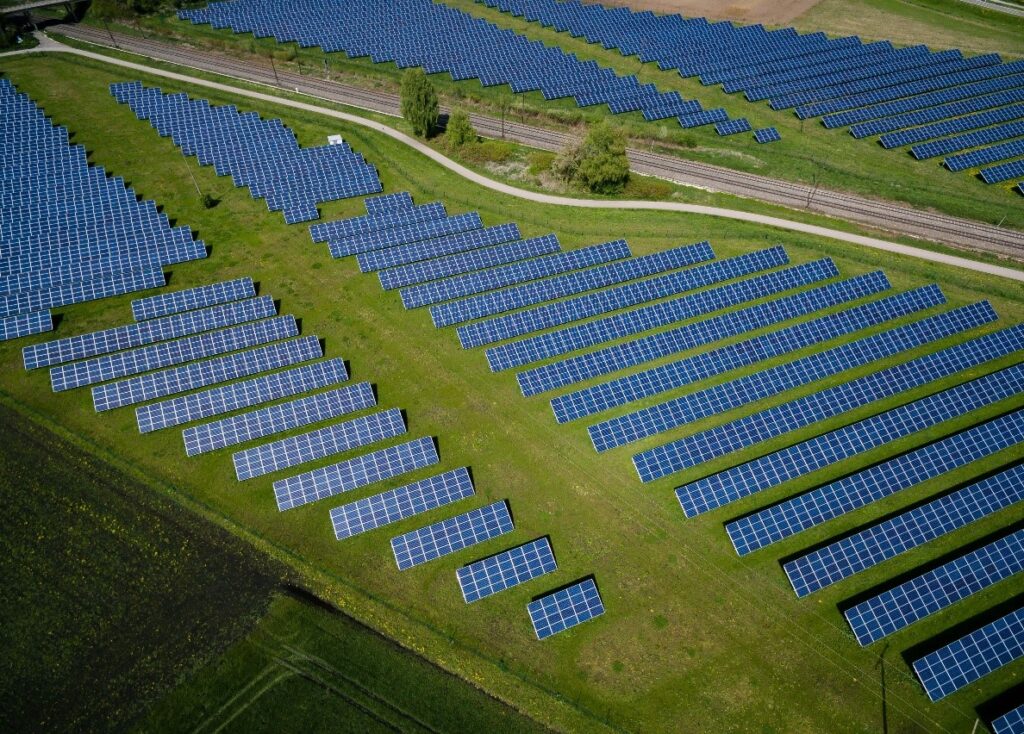By Shriya Aishani Rachakonda
Abstract
As renewable energy becomes a vital part of India’s energy transition, its impact on everyday life grows more profound. This article explores how accessible, clean energy solutions like rooftop solar panels, electric vehicles (EVs), and community microgrids are changing how Indians live and interact with energy. It discusses the financial benefits of renewable energy, community-led energy projects, and the future of household technology powered by clean sources. By examining these facets, the article demonstrates how renewable energy technologies are reshaping daily routines and conveniences, highlighting their growing importance in India’s sustainable future.
Introduction
India is moving toward sustainable and clean energy solutions at an unprecedented pace, driven by climate change concerns, energy security needs, and resource conservation. Renewable energy is not only critical for India’s environmental health but also an innovative force transforming daily life. Once seen as complex and costly, renewable energy is now present in Indian homes, transportation, and even community projects, proving that people across socio-economic backgrounds can participate in this energy revolution. From the rooftop solar panels powering rural homes to electric vehicles transforming urban transportation, the integration of renewable energy is changing how Indians live, work, and interact with their environment.
- The Home Energy Revolution: Solar Panels and Battery Storage
The adoption of rooftop solar panels has surged in India, especially under initiatives like the National Solar Mission, which aims to make solar energy more accessible to residential and commercial sectors. By harnessing the sun’s energy, households can now power lights, fans, appliances, and even electric vehicles. Over the past decade, solar installation costs in India have decreased dramatically, making it possible for millions of Indians to consider solar power. Additionally, battery storage solutions allow these households to store energy for use during power cuts, which are still common in many regions, reducing dependence on the central grid.
- Electric Vehicles: The Future of Transportation at Our Doorsteps
Electric vehicles (EVs) are revolutionizing transportation across India, offering a cleaner and quieter alternative to traditional cars. With substantial investments in EV technology and government initiatives such as the Faster Adoption and Manufacturing of Hybrid and Electric Vehicles (FAME) scheme, EVs are becoming more affordable and practical for Indian consumers. The government’s push for widespread EV adoption also includes building public and residential charging infrastructure. These steps, coupled with advances in EV battery range and affordability, have positioned EVs as the future of urban transport, with cities like Delhi, Bangalore, and Mumbai leading the way in adoption.
- Community Energy Projects: Powering Communities with Microgrids
Community microgrids are emerging as a powerful solution for India’s rural and semi-urban areas, where access to consistent electricity can be challenging. By decentralizing energy production, microgrids offer reliable power for local communities, particularly in regions where renewable sources like solar are abundant. Community-based energy projects allow villages and communities to share solar energy, creating a sustainable and independent power system. Microgrids are proving especially beneficial in states like Bihar and Jharkhand, where frequent power outages impact daily life. This model helps make reliable energy accessible to more people and reduces dependence on centralized grids.
- Financial Benefits of Renewable Energy in Everyday Life
For Indian households, the shift to renewable energy also offers considerable financial benefits. Families with rooftop solar often see reduced electricity bills, and subsidies provided by the Indian government under initiatives like the Pradhan Mantri Kisan Urja Suraksha evam Utthaan Mahabhiyan (PM-KUSUM) reduce installation costs. EV owners, though facing a higher upfront cost, benefit from lower fuel expenses and reduced maintenance, making them a financially smart choice in the long run. Furthermore, some states offer buyback programs that allow households to sell excess solar energy back to the grid, adding an income source and promoting renewable energy adoption.
- The Rise of Smart Homes and Renewable-Powered Devices
As renewable energy technologies advance, “smart” devices that run on clean energy are becoming more common in Indian households. Solar-powered gadgets like outdoor lights, mobile chargers, and thermostats are widely available and provide eco-friendly alternatives for everyday needs. Smart thermostats, for instance, can optimize energy use in solar-powered homes by learning household patterns and adjusting heating and cooling needs accordingly. These devices, especially popular in urban areas, reduce energy consumption and offer convenience, enhancing energy efficiency and further promoting sustainable living across India.
- The Role of Policy and Incentives in Expanding Accessibility
Indian government policies and incentives have been crucial in making renewable energy more accessible. Initiatives such as the solar subsidy program, income tax benefits, and the FAME scheme for EVs have been instrumental in driving adoption. These incentives make it easier for average households to embrace clean energy solutions. State governments are also actively supporting renewable adoption, with Maharashtra, Gujarat, and Rajasthan leading in solar power deployment. These supportive policies ensure that renewable energy adoption continues to grow, making clean energy a realistic choice for more Indians.
- The Future: How Renewable Energy Will Continue Shaping Daily Life
India’s renewable energy journey is still unfolding, with technologies like hydrogen fuel cells and offshore wind gaining momentum. As the country continues to diversify its energy mix, renewable solutions will likely extend to public transportation, water desalination, and rural electrification. For instance, the Indian Railways aims to become a net-zero carbon emitter by 2030 by integrating solar and wind energy into its operations. With renewable energy becoming more mainstream, India’s vision for a sustainable future will rely on the seamless integration of clean energy into everyday life, from household activities to nationwide initiatives.
Conclusion
Renewable energy is now a vital part of Indian society, not just for environmentalists or policymakers but for everyday people. The adoption of solar panels, electric vehicles, community microgrids, and smart home devices marks a transformative shift in India’s energy landscape, bringing benefits such as financial savings, increased energy independence, and reduced environmental impact. As renewable energy becomes further embedded into daily routines, it will empower individuals and communities across India to make meaningful contributions to a sustainable future. With continued government support and technological advancements, renewable energy will only grow in its impact on Indian society, enabling a cleaner, greener future for all.
References
- International Energy Agency. (2022). Renewables 2022. Retrieved from iea.org.
- World Resources Institute. (2021). Electric Vehicles and the Path to Net Zero. Retrieved from wri.org.
- Ministry of New and Renewable Energy (MNRE), India. (2021). National Solar Mission Progress Report. Retrieved from mnre.gov.in.
- EnergySage. (2022). Solar Buyback Programs and Financial Benefits. Retrieved from energysage.com.
- Smart Energy Council. (2023). The Rise of Smart Renewable Devices. Retrieved from smartenergy.org.au.
- International Renewable Energy Agency. (2022). Policies to Support Renewable Adoption in India. Retrieved from irena.org.
- United Nations Environment Programme. (2021). Renewable Energy Benefits in Emerging Economies. Retrieved from unep.org.
- Ministry of Power, India. (2021). Electric Vehicle Policy Framework. Retrieved from powermin.gov.in.
- Time Magazine. (2023). Using Gravity for Energy Storage: India’s Pilot Projects. Retrieved from time.com.
- The New Yorker. (2023). India’s Renewable Energy Milestones. Retrieved from newyorker.com.
- European Environment Agency. (2021). Urban Planning for Renewable Energy. Retrieved from eea.europa.eu.
- Vox. (2023). India’s Climate Initiatives and Renewable Investments. Retrieved from vox.com.
- Nature Sustainability. (2021). Emerging Renewable Technologies in India. Retrieved from naturesustainability.com.
- World Economic Forum. (2022). Decentralized Energy Systems in India. Retrieved from weforum.org.
- National Geographic. (2023). Exploring Renewable Solutions for a Sustainable Future in India. Retrieved from nationalgeographic.com.
- The Guardian. (2022). Green Energy Transition in Developing Economies: India’s Role. Retrieved from theguardian.com.
- Financial Times. (2023). The Rise of Electric Vehicles in India. Retrieved from ft.com.
- Reuters. (2022). India’s Advances in Solar Technology. Retrieved from reuters.com.
- Science Advances. (2021). Battery Innovations for Energy Storage in Emerging Markets. 7(4), eabc1234.
- Journal of Cleaner Production. (2022). Impact of Renewable Policies on Consumer Behaviour in India. 314, 127829.






